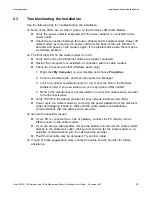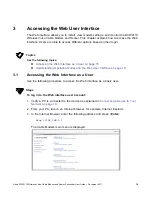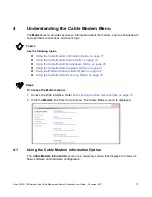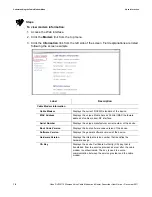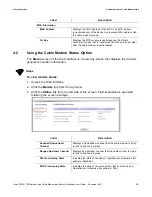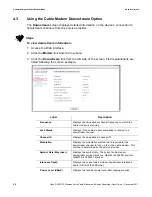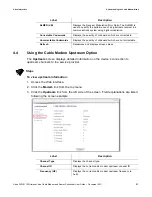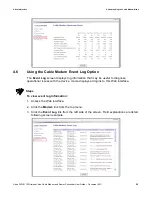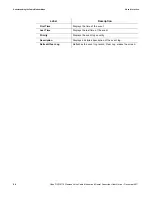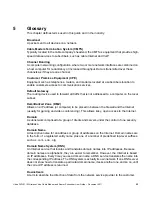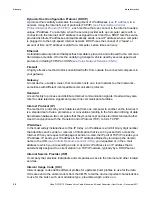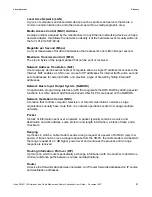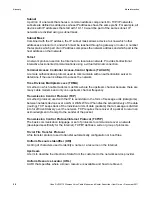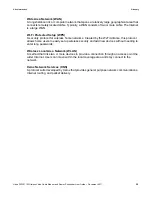
Ubee Interactive
Glossary
Ubee DVW2110 Wireless Voice Cable Modem and Router Subscriber User Guide • December 2011
27
Local Area Network (LAN)
A group of computers and associated devices such as printers and servers that share a
common communication line and other resources within a small geographic area.
Media Access Control (MAC) Address
A unique number assigned by the manufacturer to any Ethernet networking device, such as a
network adapter, that allows the network to identify it at the hardware level. Usually written in
the form 01:23:45:67:89:ab.
Megabits per Second (Mbps)
A unit of measurement for data transmission that represents one million bits per second.
Maximum Transmission Unit (MTU)
The size in bytes of the largest packet that can be sent or received.
Network Address Translation (NAT)
A technique by which several hosts or computers share a single IP address for access to the
Internet. NAT enables a LAN to use one set of IP addresses for internal traffic and a second
set of addresses for external traffic, and provides a type of firewall by hiding internal IP
addresses.
Network Basic Input Output System (NetBIOS)
An application programming interface (API) that augments the DOS BIOS by adding special
functions for LANs. Almost all Windows-based LANs for PCs are based on the NetBIOS.
Network Operations Center (NOC)
A location that controls computer, television, or telecommunications networks. Large
organizations usually have more than one network operations center to manage multiple
networks.
Packet
A block of information sent over a network. A packet typically contains a source and
destination network address, some protocol and length information, a block of data, and a
checksum.
Ranging
A process in which a cable modem sends a range request at a power of 8 dBmV (very low
power). If it does not rec i eve a range response from the CMTS, the cable modem re-transmits
the range request at a 3 dB higher power level and continues the process until a range
response is received.
Routing Information Protocol (RIP)
A protocol in which routers periodically exchange information with one another to determine
minimum-distance paths between sources and destinations.
Router
A device that forwards data between networks. An IP router forwards data based on IP source
and destination addresses.

